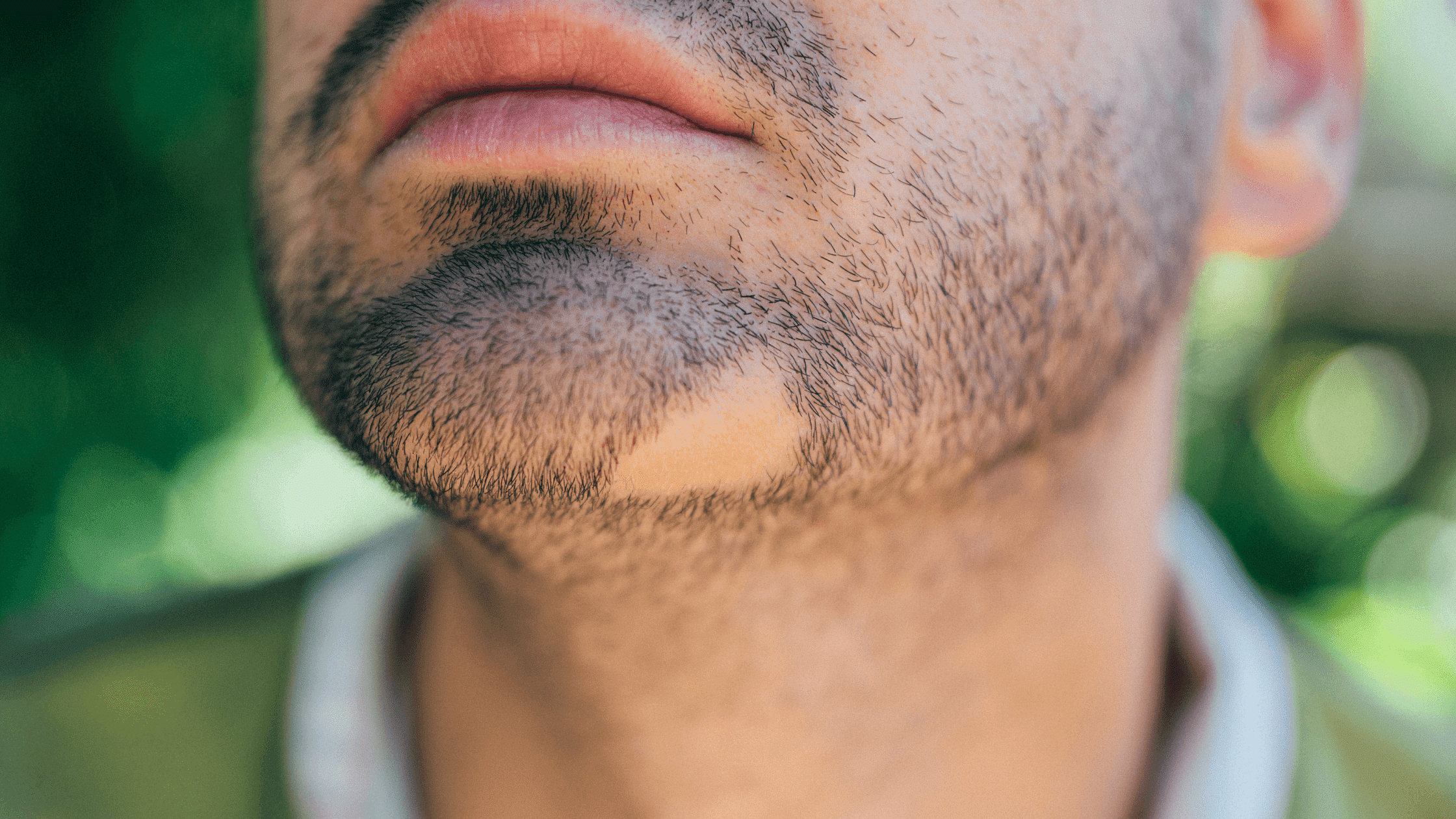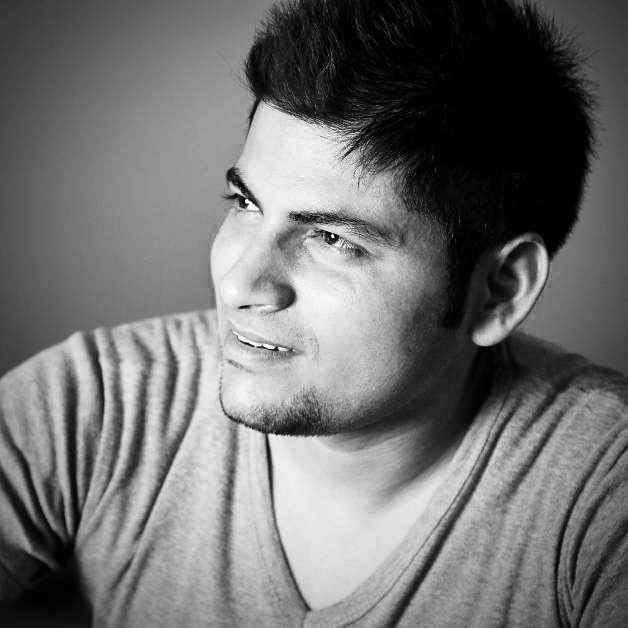Alopecia Barbae: Causes, Symptoms, and Treatments
Alopecia Barbae is a hair loss condition in which the beard and moustache get affected. It is a form of Alopecia Areata. This condition mainly affects the beard region. However, issues may also persist on the scalp.

Getting the perfect beard style isn’t a piece of cake for the majority. Most people have issues with their beard– some beard itch, low hair density, beard dandruff, etc., while some may not have any other case but notice hair loss in their beard.
Alopecia barbae, the medical term for this condition, is more common than most know. In this article, we will look at its causes, treatment, and more.
What is Alopecia Barbae?
Alopecia areata is a common health condition that causes patches of hair loss in areas such as the scalp, eyebrows, beard, etc. It is an autoimmune disease where the body’s immune system mistakenly attacks healthy cells. In the Alopecia barbae, it attacks the hair follicles, specifically in the beard area.
Usually, it happens without any prior symptoms, and one begins to lose beard hair in random circular patches.
Why Does Alopecia Barbae Occur?
Alopecia barbae is a common autoimmune disease in men where the body attacks the hair follicles in the beard area resulting in hair loss. Some people notice hair loss in small, circular patches along their jawline, while others may never get hair in their jaw area at all.
The cause of this autoimmune disease is unknown. However, research and studies have often linked Alopecia to psychological or other stressful conditions. Genetic makeup is another common reason behind conditions like Alopecia, asthma, or allergies. So, Alopecia could very well happen due to genetics.
This is more probable if you have a relative with an autoimmune disease like Type 1 diabetes, lupus, and psoriasis. This condition is also triggered by certain viruses, substances, or medications.
Symptoms
No one can predict the condition of Alopecia barbae. It happens without a prior sign. Hair loss can come on suddenly and show hair loss in a few days, or sometimes over a few weeks. Initially, one may notice bald circular patches of lost hair that could increase or even overlap. Sometimes, the hair around the bald patch is white.
Many people with this autoimmune disease feel itchy skin and pain before losing hair. Though the skin on bald patches is visibly smooth, they have a rough texture on touching. More common experiences are redness, irritation, and inflammation in the bald patches.
Diagnosis
A dermatologist or doctor can test your hair by taking samples or looking under a microscope to treat Alopecia barbae. Your doctor may at first prescribe you steroid creams to help with the condition of Alopecia. But in some severe cases, they may choose to go ahead with steroid injections or steroid tablets.
You may also need to get a scalp biopsy done or take a blood test to check if you have any underlying health condition or infection that could be contributing to Alopecia. More tests could also include tests for fungal infections or thyroid disorders.
How to Treat Alopecia Barbae
Alopecia barbae does not have any permanent solution but can be managed by prescribed drugs and treatments formulated to block the attack of the autoimmune system. Some people notice hair growth after undergoing treatments, but the hair fall may recur again. There may be some years of gap between the recurrence, and even if the hair grows back, there are chances that it will only be a partial hair regrowth.
Some people notice their hair growing back as it was before. However, it could regrow in a different colour or texture.
Different treatments have different results. Some see a significant change, while some don’t see any improvement at all. These vary from person to person according to how much hair loss they had, their age, and other factors.
The treatments aim to stimulate hair growth and are more effective if you’ve lost less than half of your hair.
Alopecia barbae Home Remedies
Alopecia barbae can be managed with some home remedies that many people commonly use to treat hair loss in their beards. While home remedies do not result in permanent solutions, they are worth the shot.
1. Garlic
Garlic is not a new ingredient in home remedies for a plethora of health issues. Its natural healing properties could help with improving symptoms of this condition. A small 2007 study reported that garlic gel effectively managed Alopecia areata. People who partook in the research and had the issue used garlic gel and a corticosteroid cream and saw a significant improvement compared to another group of people with Alopecia who only used the corticosteroid cream.
2. Viviscal
It is a natural supplement made with marine extracts. Viviscal promotes hair growth and helps with thinning hair. It takes around 6 months to show visible improvements.
The supplement works by regenerating new cells and strengthening existing cells. A study from 2016 showed that when a similar marine complex supplement was taken for six months, it resulted in hair growth and a reduced hair fall in men with thinning hair.
3. Zinc and Biotin Supplements
It’s important to follow a healthy diet and add the needed vitamins and minerals that trigger hair growth. The best way to do that is via supplements to boost zinc and biotin in the body, promoting hair growth and fighting the signs of hair loss.
Many experts prescribe a daily consumption of Mega-B vitamin that contains
- 30 milligrams of zinc
- 3 milligrams of biotin
- 200 milligrams of vitamin C
- < 1 milligram of folic acid
More natural components for Alopecia barbae home remedies that are usually taken and require more studies include:
- Wheatgrass
- Castor, almond, or coconut
- Lavender, rosemary, and geranium essential oils
- Aloe vera
- Fish oil
- Probiotics
4. Living Well
Alopecia is not a life-threatening disease but can be very taxing for emotional and mental health. It affects how one perceives themselves and feels about themselves. Whatever your hair is like, please remember that it is perfectly normal and manageable. Allow yourself to release those emotions without dwelling on them. If necessary, take professional help to deal with them and join a community of those who can understand what you feel and help you overcome those emotions.
When to See a Doctor
Many people resort to home remedies or OTC (Over-The-Counter) drugs to manage their Alopecia barbae. But if you feel the disease is affecting or interfering with your life, then get in touch with a dermatologist or a doctor who would be able to prescribe you the right treatment that suits your condition.
How Long Does a Bald Spot Take to Grow Back Hair?
It’s a question that cannot be really answered. The time taken for recovery or regrowth of beard hair depends on the severity of the condition and from person to person. Those with minor symptoms see improvements in 4-12 months, while some don’t see any change at all. Hair may grow back spontaneously or slowly over time, but it’s common to see hair growth happen.
Recovery Time
People who have one or two bald spots usually make a full recovery. The recovery usually takes a year or sometimes less than that, with or without Alopecia barbae treatment. For some others, when the bald patches are more, they see a lesser recovery rate or no recovery.
Summing Up
Alopecia barbae is an autoimmune disease but not a dangerous one that can put your health at risk. However, it may take a toll on one’s emotional and mental health. It is advisable to experiment with different treatment options to tackle the symptoms and see an improvement in the overall condition.
If you have Alopecia barbae, know that it is a common issue that can be manageable by taking care of yourself a little more. Take measures to live a healthy lifestyle and improve your well-being, and you may see some improvements in your condition.
FAQs
Does Beard Alopecia Go Away?
There is no cure for Alopecia barbae. But the autoimmune disease can be managed. With treatment, symptoms can reduce, and hair may grow back and remain. But there is no guarantee that the issue will not repeat.
Does Alopecia Grow Back a Beard?
Facial hair loss can be managed by care, good diet, workout, de-stressing, etc., along with prescribed drugs and treatment plans to promote the growth of hair on the jaw area, moustache, and sideburns.
Why Is My Beard Patchy All of a Sudden?
There are 4 common causes of patchy beards, viz., age, Alopecia barbae, genetics, and hormonal issues. Out of them, age and genetics are two of the most contributing factors resulting in people losing their beard hair. There are no permanent solutions for this, but with some home remedies, prescribed drugs, Alopecia barbae ayurvedic treatment, and lifestyle changes, the condition can be managed.
References
- Glynis Ablon, December 2016; A 6-month, randomized, double-blind, placebo-controlled study evaluating the ability of a marine complex supplement to promote hair growth in men with thinning hair - https://pubmed.ncbi.nlm.nih.gov/27506633/
- Soorih Shaikh, July 2016; Prevalence of Hair Loss and Stress as the Cause; a Cross-sectional Study - https://www.researchgate.net/publication/305903506
- Zohreh Hajheydari, January 2007; Combination of topical garlic gel and betamethasone valerate cream in the treatment of localized alopecia areata: a double-blind randomized controlled study - https://pubmed.ncbi.nlm.nih.gov/17314444/

